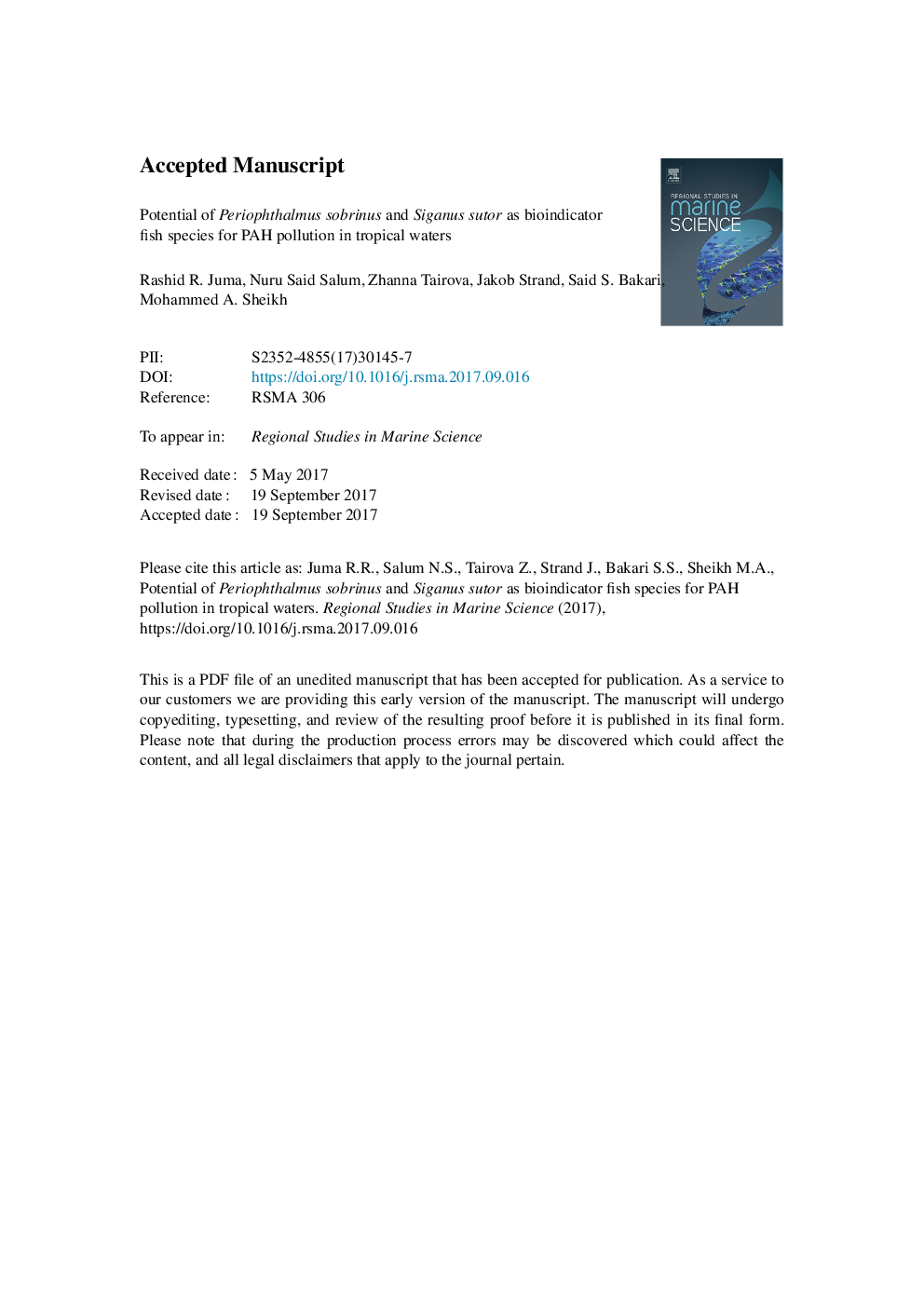| Article ID | Journal | Published Year | Pages | File Type |
|---|---|---|---|---|
| 8872628 | Regional Studies in Marine Science | 2018 | 26 Pages |
Abstract
Polycyclic Aromatic Hydrocarbons (PAHs) are ubiquitous class of toxic organic compounds in coastal waters. The aim of this study was to assess the potential of goby fish (Periophthalmus sobrinus) and rabbit fish (Siganus sutor) as bioindicators for PAH pollution in Zanzibar coastal waters. The fish samples were collected from four sites along the coasts of Zanzibar between February to July, 2016. The analysis of PAH metabolites from bile was conducted using Synchronous Fluorescence Scanning (SFS) spectroscopy. The parent PAH compounds (naphthalene; fluorene; phenanthrene; pyrene; fluoranthene; anthracene; benzo (a) pyrene) in the fish muscle tissues were analyzed using Gas Chromatography with Mass Spectrometric detection (GC/MS). The levels of PAH metabolites in bile of goby fish (P. sobrinus) ranged from 100 ng mLâ1 to 690 ng mLâ1. The PAH contents in goby tissues fish ranged from 0.028 ± 0.008 ng gâ1 ww to 0.037 ± 0.005 ng gâ1 ww with the average of 0.032 ± 0.005 ng gâ1 ww. PAH metabolites were not detected in the bile samples from rabbit fish (S. sutor) in any sampled areas. The results suggest that the goby fish (P. sobrinus) could be promising PAH biondicator in coastal waters of tropical regions including Zanzibar islands. This is the first study applying biliary PAH metabolites in bioindicator fish species to trace PAH pollution conducted in West Indian Ocean region that can serve as a baseline information of biliary PAH metabolites as biomarkers of fish PAH pollution in the regional waters.
Related Topics
Physical Sciences and Engineering
Earth and Planetary Sciences
Oceanography
Authors
Rashid R. Juma, Nuru Said Salum, Zhanna Tairova, Jakob Strand, Said S. Bakari, Mohammed A. Sheikh,
